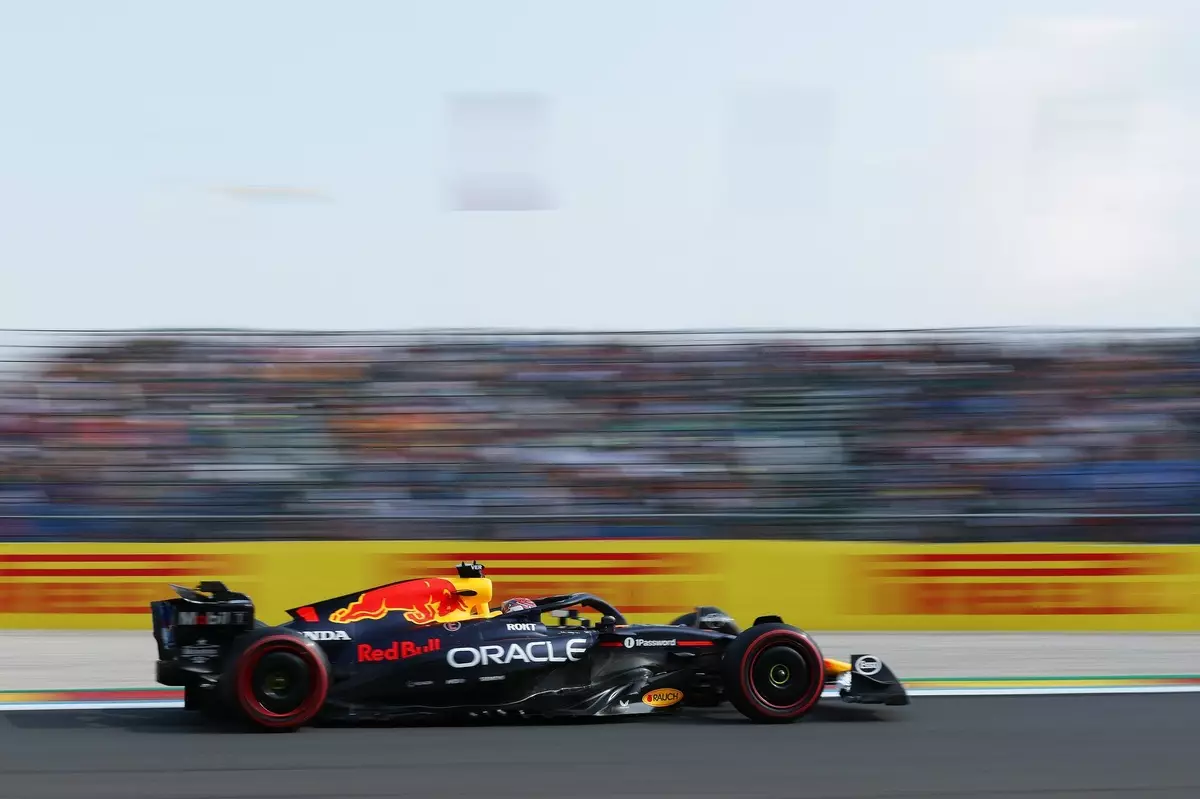In the high-stakes world of Formula 1, qualifying sessions often serve as a brutal reminder that raw speed isn’t enough; strategic execution and nuanced performance metrics are equally vital. Recent events at the Belgian Grand Prix demonstrated that even with the fastest car across all segments, maintaining a competitive edge is a complex ballet of engineering precision, driver skill, and real-time decision-making. Max Verstappen’s inability to challenge Oscar Piastri underscores a crucial insight: being marginally off in key sectors can cost precious positions, regardless of car performance.
Verstappen’s performance reflects the fine margin for error that defines modern F1 racing. Despite Red Bull’s continuous upgrades, the gap to McLaren’s fresh capabilities offers a stark reminder that technological improvements must be complemented with optimal setup and flawless execution. The Dutch driver’s quarter-second deficit is more than just numbers; it symbolizes the delicate balancing act teams face—adding downforce improves cornering but hampers top speed, especially on the straights. This compromise exemplifies how teams grapple with maximizing their cars’ potential within the restrictive rules, often leading to marginal gains that may or may not translate into real race advantage.
McLaren’s Quiet Dominance and the Challenge of Consistency
While Verstappen’s struggles make headlines, McLaren’s consistent pace illustrates a more subtle yet formidable threat. Oscar Piastri’s near-miss to pole position, despite a lap time deleted for exceeding track limits, reveals a team that is finely tuned and hungry for victory. Lando Norris’s sixth-tenths deficit highlights the ongoing challenge of converting qualifying pace into race-winning performance. It’s a testament to the importance of technical reliability and driver confidence—factors that can be the difference between a good qualifying session and absolute dominance.
McLaren’s approach underscores a broader strategic shift seen in contemporary F1: maximized efficiency and minimal mistakes trump outright speed. Piastri’s remarkable ability to extract performance from every sector impresses, especially given the added pressure that’s characteristic of his rookie debut in such a fiercely competitive environment. The fact that all teams are chasing the elusive perfect balance shows that this pattern of incremental improvements is the new normal. Success now hinges on tiny details and the psychological fortitude to stay focused amid relentless scrutiny.
Red Bull’s Ongoing Battle for Supremacy
Red Bull’s narrative at this stage is one of resilience and adaptability. Helmut Marko’s comments varsity that not only are they aware of their shortcomings, but they’re actively working on solutions. The team’s recent upgrades, which Marko considers “definitely an improvement,” nonetheless fall short of bridging the gap to McLaren’s pace. This emphasizes that development races in F1 are far from linear; every upgrade carries risk and trade-offs.
Verstappen’s measured frustration—his comment that a nearly five-tenths gap means straights and sectors are less impactful—exposes a deeper truth: tackling the challenge in qualifying is as much about managing expectations as it is about raw data. Red Bull’s focus remains on finding the perfect compromise, not just chasing raw lap times, but ensuring the overall package is optimized for race day performance. This strategic patience reflects a team that understands that pace in qualifying doesn’t automatically translate into race victory; consistency, reliability, and operational excellence reign supreme.
The Rising Stars and the Limits of Development
Meanwhile, Yuki Tsunoda’s continued struggle to reach Q3 segments underscores a different narrative—the importance of development pathways and the impact of upgrade allocation. His lack of recent improvements, compounded by not receiving the latest performance parts, highlights how resource distribution can influence driver performance trajectories. It’s a snapshot of the broader developmental challenges teams face: effective upgrade prioritization and how to nurture emerging talent within resource constraints.
Tsunoda’s comments reveal a driver aware of his shortcomings but also frustrated by the persistent narrow margins. Marko’s cautious optimism about his future prospects reveals a realistic but hopeful outlook—that with incremental progress, even drivers in a less competitive position can carve out respectable results. The notion that Tsunoda could improve in the main race emphasizes that qualifying speed is only one piece of the puzzle; race pace, strategy, and mental resilience are equally critical.
The Unseen War Behind the Timesheets
What these qualifying results truly unveil is that Formula 1’s battle is as much about engineering philosophy and strategic nuance as it is about outright speed. Teams are engaged in a relentless pursuit of marginal gains, understanding that victory often resides in the smallest of advantages—be it through aerodynamic adjustments, power savings, or psychological resilience. Verstappen’s experience proves that even in the era of technological hyper-advancement, human judgment and strategic finesse remain at the core of combat.
Ultimately, the Belgian Grand Prix qualifying session exemplifies that behind every lap time, there is an intricate story of compromise, innovation, and relentless ambition. As teams push the boundaries of what’s possible, they also reveal the profound complexity of racing at the highest level—a blend of science, art, and psychology. In this landscape, standing still is not an option; every millisecond gained or lost shapes the narrative of victory or defeat.


Leave a Reply